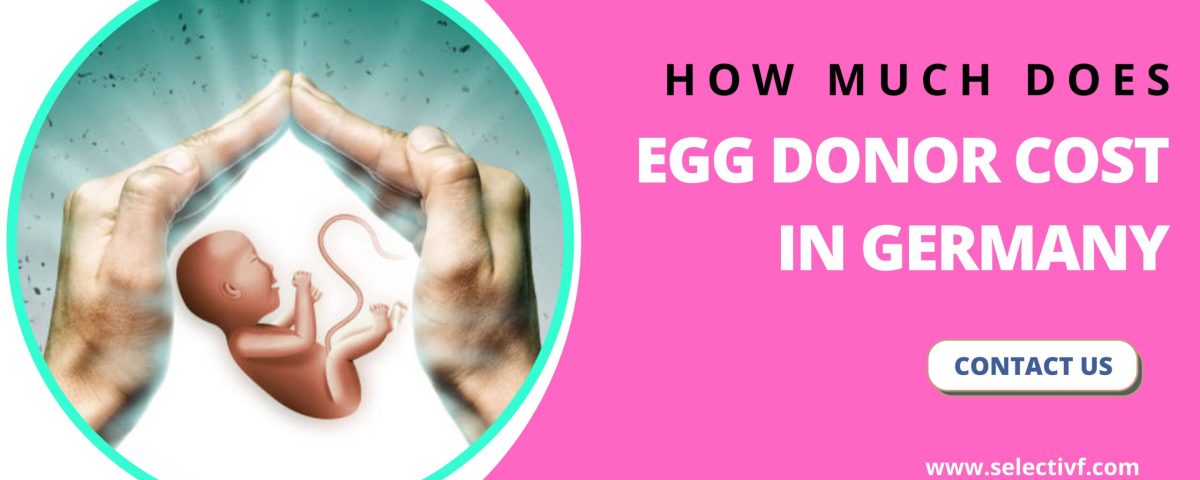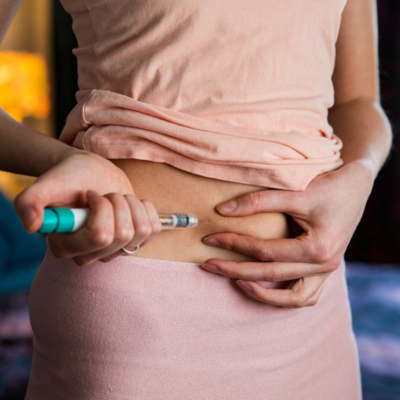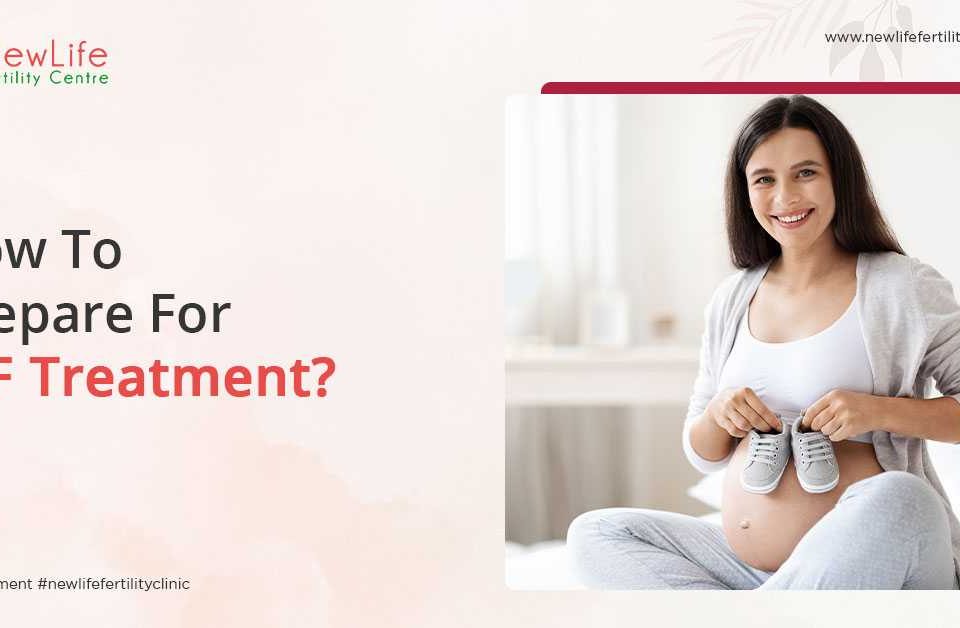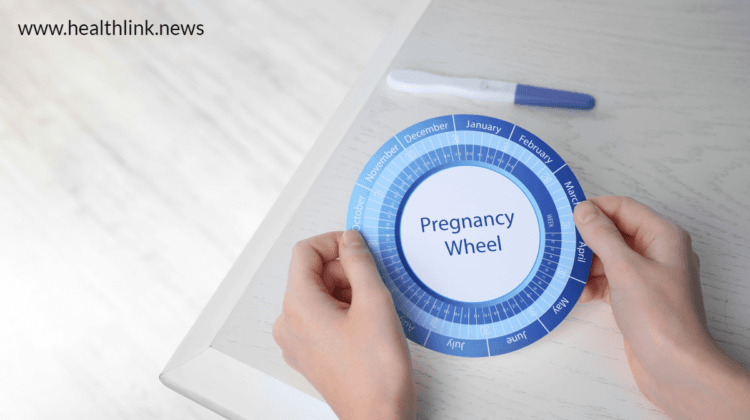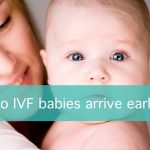
Do IVF Babies Come Early? A Deep Dive into What You Need to Know
April 23, 2025
Does Blue Cross Blue Shield Cover IVF? Your Guide to Understanding Fertility Coverage
April 23, 2025How Much Does IVF with an Egg Donor Cost?
Starting a family can feel like a dream come true, but for some, the path to parenthood involves extra steps—like in vitro fertilization (IVF) with an egg donor. If you’re exploring this option, one of the first questions that pops up is: How much is this going to cost? It’s a big deal, and the numbers can feel overwhelming at first. Don’t worry—I’m here to break it all down for you in a way that’s easy to digest, with real insights, practical tips, and even a few surprises that most articles skip over. Let’s dive into the world of IVF with an egg donor and figure out what you’re really looking at, dollar by dollar.
The Basics: What’s IVF with an Egg Donor All About?
IVF with an egg donor is a fertility treatment where eggs from a donor are fertilized with sperm (yours, your partner’s, or a donor’s) in a lab. Once an embryo forms, it’s transferred to the uterus—either yours or a surrogate’s—to hopefully grow into a healthy baby. People turn to this option for all sorts of reasons: maybe age has affected egg quality, there’s a genetic condition to avoid, or same-sex couples and single folks want to build their families. It’s a powerful tool, but it comes with a price tag that reflects the science, care, and coordination involved.
The cost isn’t just one number—it’s a puzzle with lots of pieces. You’ve got the IVF process itself, the donor’s compensation, medical fees, and sometimes extras like legal agreements or travel. On average, you’re looking at $20,000 to $45,000 per cycle in the U.S. as of 2025, but that range can shift depending on where you are, what you need, and how many tries it takes. Let’s unpack it step by step so you know exactly what’s driving those numbers.
Breaking Down the Costs: What You’re Actually Paying For
When you see a price like $20,000-$45,000, it’s natural to wonder, What’s all that money going toward? Here’s the breakdown of the main costs you’ll encounter with IVF using an egg donor. Think of it like a shopping list—each item adds up to the total.
The IVF Cycle: The Core Expense
The IVF process itself is the foundation. This covers everything from monitoring your cycle (or the donor’s), retrieving the eggs, fertilizing them in the lab, and transferring the embryo. In the U.S., a single IVF cycle typically costs between $12,000 and $20,000 without a donor. Add in the egg donor piece, and you’re building on that base. Clinics often bundle these services into a “base fee,” but it doesn’t always include everything—more on that later.
Egg Donor Compensation: A Big Chunk
Donors don’t do this for free, and rightfully so—they’re giving time, effort, and their own biology to help you. Compensation varies widely, usually landing between $5,000 and $10,000 per cycle, though it can climb higher for donors with specific traits (like advanced education or rare ethnic backgrounds). Some clinics cap this at $10,000 based on ethical guidelines from the American Society for Reproductive Medicine (ASRM), but in high-demand areas like California, you might see outliers pushing $15,000 or more.
Donor Agency Fees: The Middleman Cost
If you’re finding a donor through an agency, they’ll charge a fee for matching you with someone, screening them, and handling logistics. This can range from $3,000 to $8,000. Agencies often provide a pool of pre-screened donors, which saves time but adds to the bill. Going direct to a clinic or using a known donor (like a friend) might skip this cost, but that’s not always an option.
Medications: Fueling the Process
Both the donor and the recipient (you or a surrogate) need meds. For the donor, it’s hormones to boost egg production—think $3,000 to $5,000. For you, it’s drugs to prep your uterus, which might add $500 to $2,000. These costs depend on dosages and how your body responds, so they’re tough to pin down exactly until you’re in it.
Embryo Freezing and Storage: Planning Ahead
Got extra embryos? Freezing them for later runs about $1,000 to $2,000 upfront, plus $300 to $600 a year for storage. It’s like an insurance policy—if this cycle doesn’t work, you’ve got backups without starting from scratch.
Legal and Travel Fees: The Hidden Extras
If your donor’s from out of town, you might cover her travel—flights, hotels, meals—which can add $500 to $2,000. Then there’s the legal side: contracts to clarify everyone’s rights (especially if it’s a known donor) can cost $500 to $1,500. These aren’t always in the headline price, so they catch people off guard.
Here’s a quick snapshot in a table to see it all at once:
| Expense | Cost Range | What It Covers |
|---|---|---|
| IVF Cycle | $12,000 – $20,000 | Monitoring, egg retrieval, embryo transfer |
| Donor Compensation | $5,000 – $10,000+ | Payment to the egg donor |
| Agency Fees | $3,000 – $8,000 | Matching and screening services |
| Medications (Donor) | $3,000 – $5,000 | Hormones for egg production |
| Medications (Recipient) | $500 – $2,000 | Uterus prep drugs |
| Embryo Freezing | $1,000 – $2,000 | Cryopreservation of extras |
| Storage Fees | $300 – $600/year | Keeping embryos frozen |
| Travel (if applicable) | $500 – $2,000 | Donor’s travel expenses |
| Legal Fees | $500 – $1,500 | Contracts and agreements |
Add these up, and you’re in that $20,000-$45,000 ballpark. But here’s the kicker: most people don’t get pregnant on the first try. Success rates with donor eggs hover around 50% per cycle, so you might need two or three rounds, pushing your total closer to $60,000 or more. That’s why planning—and budgeting—is everything.
Fresh vs. Frozen Donor Eggs: Does It Change the Price?
One choice you’ll face is whether to use fresh or frozen donor eggs. It’s not just about convenience—it affects the cost and success odds too. Let’s compare.
Fresh Donor Eggs
With fresh eggs, the donor goes through a cycle synced with yours. Her eggs are retrieved, fertilized right away, and transferred as embryos. It’s the “classic” approach, and it’s pricier—think $25,000 to $45,000 per cycle. Why? You’re paying for real-time coordination, the donor’s full process, and often higher agency fees. The upside? Fresh eggs have a slightly higher success rate—around 55% for live births, per the CDC’s 2020 data (the latest detailed stats adjusted for 2025 trends).
Frozen Donor Eggs
Frozen eggs come from a bank, already retrieved and stored. You pick a batch (usually 6-8 eggs), thaw them, fertilize, and transfer. This cuts out syncing schedules, so it’s cheaper—$20,000 to $30,000 per cycle. The trade-off? Success rates dip a bit to 40-45%, since freezing and thawing can affect egg quality. Plus, you might need more eggs if some don’t survive the thaw, adding a small extra cost.
Which Should You Choose?
- ✔️ Go fresh if you want the highest odds and don’t mind the cost or complexity.
- ❌ Skip frozen if you’re worried about lower success rates or limited egg numbers.
- ✔️ Pick frozen if you’re on a tighter budget or want a faster start.
It’s a personal call, but talk to your doctor. They’ll look at your situation—like age or sperm quality—and guide you. Fun fact: a 2023 study in Fertility and Sterility found frozen eggs are catching up in success rates thanks to better freezing tech, so the gap’s narrowing.
Where You Live Matters: Location and Cost Variations
Your zip code plays a huge role in what you’ll pay. IVF with an egg donor isn’t the same price everywhere—supply, demand, and local healthcare costs shift the numbers. Here’s how it shakes out.
Big Cities vs. Small Towns
In places like New York or Los Angeles, expect to pay at the high end—$30,000 to $45,000 per cycle. Why? Higher demand, more clinics competing for donors, and steeper living costs drive up prices. In smaller towns or the Midwest, you might see $20,000 to $35,000. Clinics there often have lower overhead and fewer patients vying for donors.
International Options
Some folks look abroad to save cash. In Spain or the Czech Republic, a donor egg IVF cycle can drop to $7,000-$15,000, including travel. The catch? You’re navigating foreign healthcare, language barriers, and follow-up care back home. Success rates are solid—Europe’s got a strong fertility scene—but it’s a gamble if complications pop up. A 2024 report from the European Society of Human Reproduction and Embryology (ESHRE) showed these countries lead in affordable donor IVF, with live birth rates near 50%.
Quick Tip
Call clinics in your area and a state over. A short drive could save thousands. For example, a clinic in Raleigh, NC, might charge $25,000, while one in Charlotte’s at $30,000—just for city vibes.
Insurance and Financing: Can You Get Help?
Most U.S. insurance plans don’t cover IVF, let alone donor eggs. Only 19 states mandate some fertility coverage as of 2025, and even then, it’s spotty—think diagnostic tests, not full cycles. Donor egg IVF often falls under “elective,” so you’re usually on your own. But there are ways to lighten the load.
Insurance Hacks
- Check your employer. Big companies (think tech or finance) sometimes offer fertility benefits—up to $20,000 at places like Google. Ask HR!
- Look at state laws. In New York, insurance must cover three IVF cycles, but donor eggs might still be out-of-pocket. Dig into the fine print.
Financing Options
- Loans: Clinics partner with lenders like Future Family, offering IVF loans with 5-10% interest. Monthly payments can stretch $30,000 over five years—about $600/month.
- Grants: Nonprofits like BabyQuest give $2,000-$16,000 to qualifying families. Apply early—funds run out fast.
- Clinic Discounts: Some offer “shared risk” plans—pay $40,000 upfront for three cycles, get a refund if it fails. It’s a bet on success.
Interactive Quiz: Can You Afford It?
Take a sec to answer these—jot your score down!
- Do you have $20,000+ saved? (Yes = 2, No = 0)
- Does your job offer fertility benefits? (Yes = 2, No = 0)
- Are you okay with loans or travel? (Yes = 1, No = 0)
- 4-5: You’re in good shape to start!
- 2-3: You’ll need a plan—financing or savings.
- 0-1: Time to brainstorm creative funding.
Three Things You Haven’t Heard About Costs
Most articles stick to the basics, but there’s more to this story. Here are three angles you won’t find everywhere—stuff that could save you money or stress.
1. The “Egg Sharing” Option
Some clinics let donors share eggs with multiple recipients. Say a donor produces 20 eggs—one person gets 10, another gets 10. You split the compensation cost, dropping it to $2,500-$5,000 instead of $10,000. It’s rare—only 5% of U.S. clinics offer it, per a 2024 ASRM survey—but it’s a budget game-changer. Downside? Fewer eggs mean a slightly lower success chance, but it’s worth asking about.
2. Tax Breaks You’re Missing
IVF expenses can qualify as medical deductions on your taxes if they exceed 7.5% of your adjusted gross income (AGI). If you make $80,000, that’s $6,000—spend $30,000 on donor IVF, and you could deduct $24,000. A 2023 IRS update confirmed fertility treatments count, even donor-related costs. Chat with a tax pro—it might cut your net cost by thousands.
3. The Cost of Waiting
Delaying IVF with donor eggs can backfire. Egg donor fees rise with demand—up 10% since 2020, per Reproductive Biomedicine Online. Wait a year, and that $30,000 cycle might hit $33,000. Plus, if you’re older, success rates dip, meaning more cycles. A 2024 study in Human Reproduction found women over 40 using donor eggs needed 1.8 cycles on average vs. 1.5 for under 35s. Time’s money here—literally.
Success Rates and Costs: Are You Getting What You Pay For?
Paying $30,000 feels better if you know it’ll work. Donor egg IVF has higher success rates than regular IVF—about 50% live births per cycle vs. 30% with your own eggs, per CDC data. Why? Donors are usually young (21-34), with top-notch eggs. But success isn’t guaranteed, and that’s where costs can spiral.
- Age Factor: If you’re under 35, your uterus is primed—50-55% success. Over 40? Drops to 45%, meaning more tries.
- Clinic Quality: Top clinics (think CCRM or Shady Grove) boast 60%+ rates but charge $35,000+. Budget spots might save $5,000 but dip to 40%.
- Extras Like ICSI: Intracytoplasmic sperm injection (sperm injected into the egg) adds $1,000-$2,000 but boosts odds if sperm’s an issue.
Here’s a reality check: if your first cycle fails, you’re not out $30,000—you’re in for another round. A couple I know spent $65,000 over two cycles before their daughter arrived. Worth it? To them, yes. To you, it’s about weighing the odds.
Real Stories: What People Actually Spend
Numbers are one thing—real life’s another. Meet Sarah and Mike, a couple from Texas. They went for frozen donor eggs at $25,000 a cycle. First try failed—embryo didn’t implant. Second try, with a $5,000 frozen embryo transfer (FET), worked. Total: $55,000, including meds and storage. “We budgeted $40,000,” Sarah said. “The extra hurt, but holding our son made it fade.”
Then there’s Priya, a single mom in Chicago. She picked a fresh donor cycle at $35,000, scored a grant for $10,000, and used a loan. One cycle, one baby—$25,000 net. “I shopped clinics like crazy,” she said. “Saved $5,000 just by driving an hour.”
These stories show it’s not just the price—it’s the journey. Your path might look different, but hearing how others navigated it can spark ideas.
Cutting Costs Without Cutting Corners
Sticker shock’s real, but you can trim the bill smartly. Here’s how to save without risking your shot at success.
Shop Around
Call 3-5 clinics. Ask for itemized quotes—some bundle meds, others don’t. A 2024 FertilityIQ survey found price gaps of $10,000 for the same services within 50 miles. Online reviews help too—look for high success and fair pricing.
Multi-Cycle Deals
Some clinics offer packages—$40,000 for three cycles vs. $25,000 each. If it works early, you save; if not, you’re covered. Check refund policies—10% of U.S. clinics offer partial cash back if all cycles fail.
Go Mini-IVF
A lighter version of IVF uses fewer drugs, cutting costs to $15,000-$20,000 with donor eggs. Success rates are lower (30-40%), but a 2023 study in Journal of Assisted Reproduction found it’s a solid pick for younger patients or tight budgets.
Poll: What’s Your Budget Strategy?
Pick one and share in your head (or with a friend!):
- A) Save up the full amount first
- B) Take a loan and pay over time
- C) Mix savings, grants, and discounts
No wrong answers—just what fits your life.
The Emotional Cost: Beyond the Dollars
Money’s only half the story. IVF with an egg donor can be a rollercoaster—hope, stress, maybe disappointment before joy. A 2024 study in Psychology Today found 60% of IVF patients felt financial strain worsened their emotional load. Sarah (from earlier) said, “Every bill felt like a test of how bad I wanted this.” It’s not just cash—it’s energy, time, and heart.
- ✔️ Tip: Build a support crew—friends, a therapist, or online forums. It’s cheaper than burnout.
- ❌ Don’t: Ignore the toll. Skimp on self-care, and the process gets harder.
What’s New in 2025: Trends Shaping Costs
The fertility world’s always shifting. Here’s what’s hot in 2025 that could affect your wallet.
AI in Embryo Selection
Clinics are using AI to pick the best embryos, upping success rates by 5-10% (per a 2024 Nature Medicine study). Cost? An extra $500-$1,000 per cycle. Worth it if it saves you a second round.
Donor Egg Banks Growing
Frozen egg banks are booming—20% more options than in 2020, says ESHRE. More supply could drop prices slightly—think $500-$1,000 less by 2026 if trends hold.
Insurance Push
Posts on X in 2025 show folks lobbying for better IVF coverage. If states like California expand mandates, donor egg costs might get partial relief—stay tuned.
Your Next Steps: Making It Work
Ready to dive in? Here’s a game plan to keep costs in check and your hopes up.
- Research Clinics: Compare prices, success rates, and reviews. Aim for a sweet spot—solid outcomes, fair cost.
- Budget Realistically: Plan for two cycles ($50,000-$60,000) to be safe. Add 10% for surprises.
- Explore Funding: Apply for grants, check employer perks, or talk loans with your bank.
- Ask Questions: Grill clinics on what’s included—meds? Freezing? Don’t assume.
- Lean on Support: Join a fertility group (online or local). Shared stories cut stress.
IVF with an egg donor isn’t cheap, but it’s not just about money—it’s about building your family. Whether it’s $20,000 or $60,000, every dollar’s a step toward that goal. You’ve got this—take it one piece at a time, and you’ll find your way.

